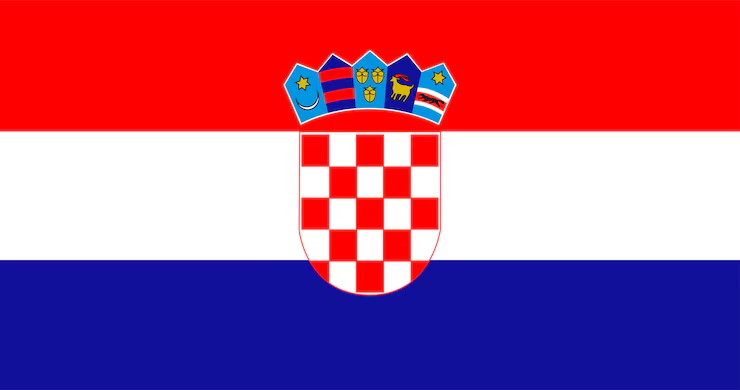Stablecoin payments are a fast-emerging alternative to traditional banking, and one that is increasingly relevant in a rapidly digitizing world. In Croatia — best known for its booming tourism sector and rapidly expanding tech scene — this development is underway with the rise of stablecoins such as USDC and USDT for cross-border and domestic transfers. This article focuses on how stablecoins are changing payments in Croatia. You’ll find real-life use cases, regulatory developments, industry adoption, and innovation trends.
Understanding Stablecoins and Their Global Rise
Stablecoins marry the benefits of cryptocurrencies — speed, transparency, and being non-tethered to a specific country — with the price stability of a traditional currency. Their design also makes them an attractive option for payment uses versus volatile digital assets, such as Bitcoin. The stablecoin market is thriving worldwide — according to one report, stablecoins represented almost half of the transaction volumes of top digital asset markets by 2024. With the capacity to handle payments in real-time and at a fraction of the cost of traditional banking, the company’s products have become the partner of choice for fintechs, payments services businesses, and multinational companies looking to enable customer and corporate access to 24/7 financial services.
Croatia’s Regulatory Framework: Clarity with Caution
Croatia has taken a cautious yet consistent approach when it comes to the regulation of cryptocurrency and stablecoins. As, under Croatian law, cryptocurrencies are not legal tender and are not recognized by the Croatian National Bank (CNB) as official payment instruments, businesses can legally accept them provided they meet regulatory requirements.
Key regulatory elements include:
- Registration requirements: Crypto exchanges and similar businesses offering services must be registered with HANFA (Croatian Financial Services Supervisory Agency).
- AML compliance: Anti-money laundering regulation and compliance are not yet mandatory, but they should be adhered to for all crypto users.
- Taxation: There is a 12% capital gains levy on converting cryptocurrencies, including stablecoins, to legal tender, but no tax is levied on crypto-to-crypto trades.
Croatia is also fully adopting the EU Markets in Crypto-Assets (MiCA) regulation by 2026. Such a Europe-wide framework will also establish common licensing and oversight requirements for stablecoins, ensuring that they are an accepted part of the financial environment.
Adoption Trends: USDC and USDT Payments in Croatia
Adoption statistics for Croatia are still in their infancy, but the overall regional outlook is very promising. There is almost as much demand for stablecoins on the books in a region made up of Central, Northern, and Western Europe (and Croatia) as there are daily on-chain transactions in the same area, at $422.3 billion in annual activity
Croatian fintech companies are using stablecoins for high-value B2B, invoice payments, and cross-border payrolls. More than 35 million stablecoin transactions occur on platforms like Fireblocks each month, signaling institutional spread.
A particularly significant trend is the increase of USDC and USDT for outbound payments to areas such as Latin America. These are transfers that typically range from about $100,000 to $250,000 and show the promise of stablecoins for avoiding slow and expensive SWIFT transfers.
Also read: Case Study: How a Nigerian E-Commerce Store Uses TransFi + Stablecoins to Accept Global Payments
Stablecoins in Croatian Tourism
Tourism makes up almost 20% of Croatia’s GDP so this is an important market for payment innovation. Cash and card payments still reign supreme, but crypto payments—including stablecoins—are starting to make waves in the world of tourism.
- Early Adopters: Retail chains such as Konzum and gasoline stations such as Tifon take crypto-including stablecoins-which suggests a slow mainstreaming.
- Business Benefits: Stable coin remittances enable tourism businesses to bypass expensive currency conversion costs and enable instant settlements, which are particularly appealing for foreign tourists.
- Customer Experience: Tourists already aware of there being cryptocurrency payment gateways for travelers in Croatia will find stablecoins useful, as there are no exchange rate hassles and transactions are faster.
While current usage is fairly limited, growing levels of adoption are likely as blockchain is more accepted in the Croatian tourism and authorities become more certain about regulation.
Stablecoins in Croatia’s Tech Ecosystem
The country’s tech ecosystem, among which are fast-growing fintech startups and blockchain developers, is taking the top spot when it comes to stablecoin adoption which is set to change the way credit is established and settlements are made in the gig economy and other sectors. They use stablecoins to address classic banking problems and increase operational efficiency.
Use cases include:
- International Payroll: How To Pay A Remote Team Digitally, With US Dollars, From Croatia’s Tech Ecosystem.
- SaaS Billing: Stablecoins are helping subscription businesses handle cross-border client payments more efficiently.
- Treasury Management - CFOs use stablecoins to reduce FX volatility and accelerate settlements with global suppliers.
Innovation Example – TransFi Integration:
TransFi has built an API that allows Croatian startups and tourism businesses to convert USDC for their international guests in Croatia, or spend it anywhere globally. Its on-off ramp services simplify regulatory integration and increase stablecoin adoption in the two sectors.
Challenges in Stablecoin Adoption
Despite growing adoption, the path is not without obstacles:
- Regulatory ambiguities around DeFi, NFTs, and algorithmic stablecoins create uncertainty.
- Traditional banks often block crypto-related transactions, making on/off-ramping difficult for Croatian consumers.
- Speed and fees of transactions depend on the blockchain (e.g., it is different to perform a transaction on Ethereum than on Solana).
- Retail uptake and consumer awareness, and protection remain low.
Most of these issues are expected to be resolved by the full implementation of MiCA in 2026. However, enterprises must invest in compliance systems, payment infrastructure, and user education to capitalize on stablecoin benefits.
Also read: Case Study: TransFi’s Role in Driving Regulatory-Compliant Stablecoin Adoption in LATAM
Future Outlook
Croatia’s stablecoin journey is still in its infancy but rapidly evolving. In the next few years, expect:
- Adoption by the tourism sector is expected to increase, providing a better travel experience for crypto-friendly travellers.
- Tech startups and fintech companies are using more financial services based on stablecoins, such as cross-border payments and programmable money services.
- Broader consumer knowledge which resulted in more crypto acceptance in everyday life as a means of paying for retail and services.
- Regulatory alignment with EU laws to encourage more institutional players to enter the market.
Stablecoins such as USDC and USDT have the potential to become integral parts of Croatia’s digital finance infrastructure, enabling efficient, borderless transactions that support economic growth.
Conclusion
Croatia joins a global movement towards stablecoin payments in digital dollars, which are driving commerce and financial inclusivity. Whether it be crypto payments for tourism, or stablecoin initiatives within tech startups, Croatia is slowly establishing the infrastructure for quicker, cheaper and more transparently secure financial transactions. With the regulatory situation becoming increasingly clear and infrastructure offerings like TransFi, the nation is prepared to become a strong player in Europe’s growing digital economy.
FAQs
- Are stablecoin payments legal in Croatia?
Yes. Cryptocurrencies are not yet recognized as a legal tender, but businesses could be allowed to accept stablecoins if they adhere to HANFA’s registration and AML regulations.
- Can tourists pay with stablecoins in Croatia?
Yes. A few retailers, gas stations and supermarkets may accept this digital currency, including stablecoins — but adoption remains scarce.
- Which stablecoins are popular in Croatia?
USDC and USDT are widely used, mainly for B2B transactions and cross-border transactions.
- Is there a tax on stablecoin use?
Yes. Stablecoin-to-fiat trading is taxed at 12% (capital gains tax), whereas crypto-to-crypto trades are still tax-free.
- How can Croatian startups integrate stablecoins?
They can use platforms like TransFi to integrate wallets, enable USDC/USDT payments, and bridge fiat-to-crypto rails with minimal friction.
Daftar Isi
Artikel yang Disarankan
Jelajahi produk kami

Lakukan pembayaran global dengan kecepatan klik

Terima pembayaran, hapus batas.

Buka Transaksi Mata Uang Digital yang Mulus Di Mana Saja









.png)














